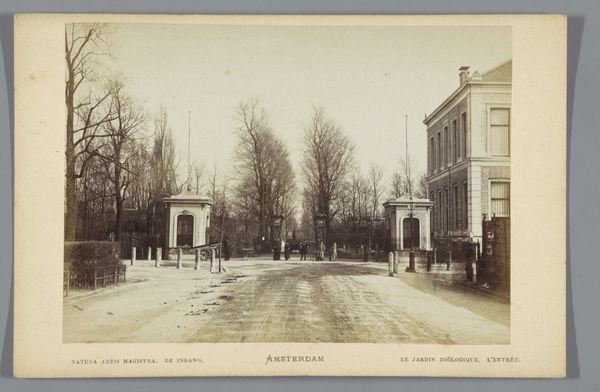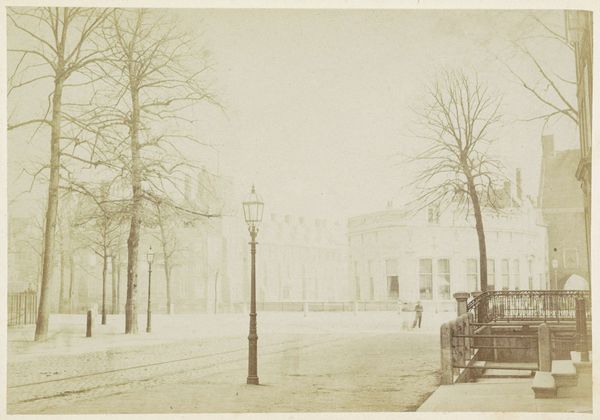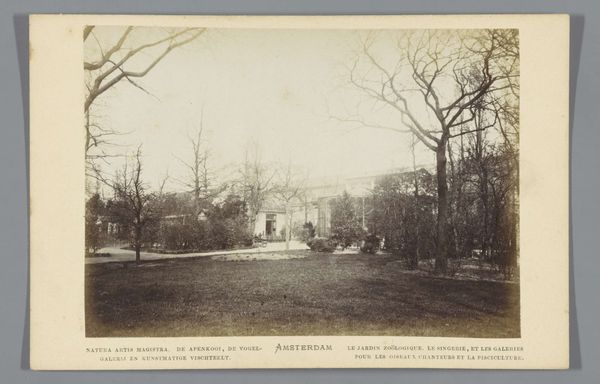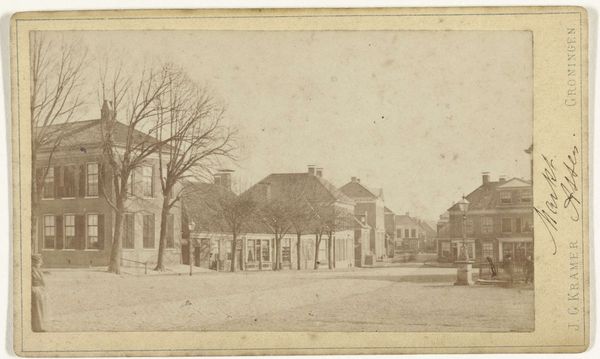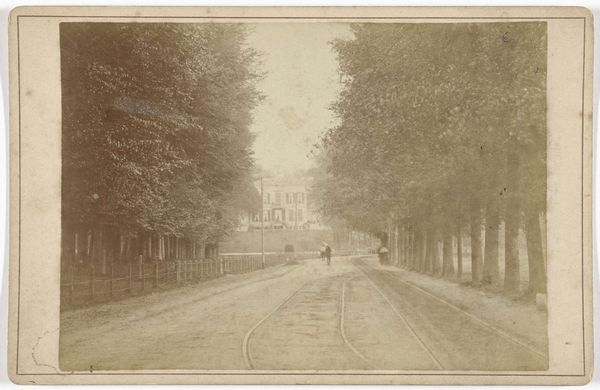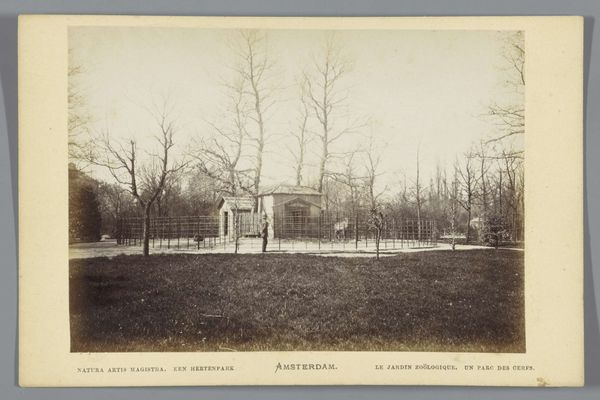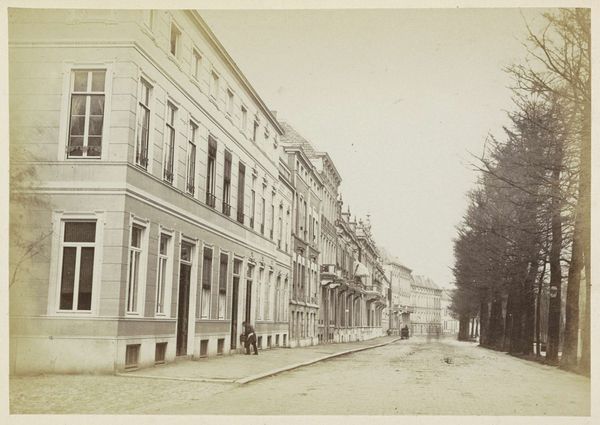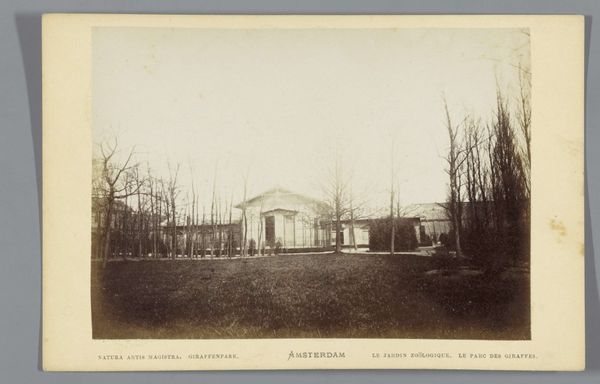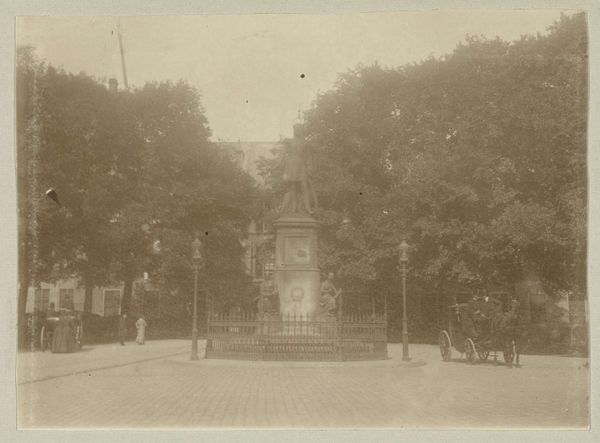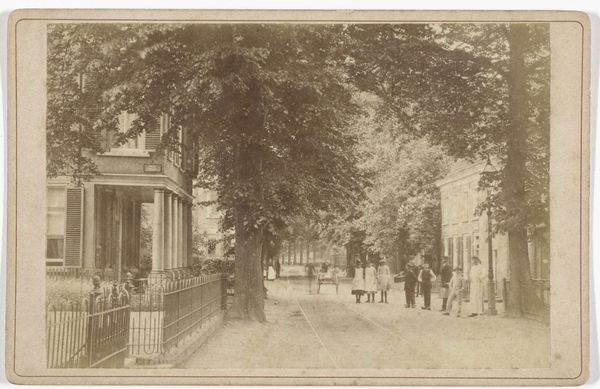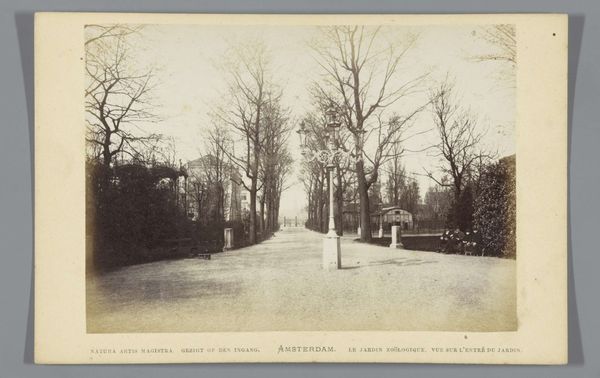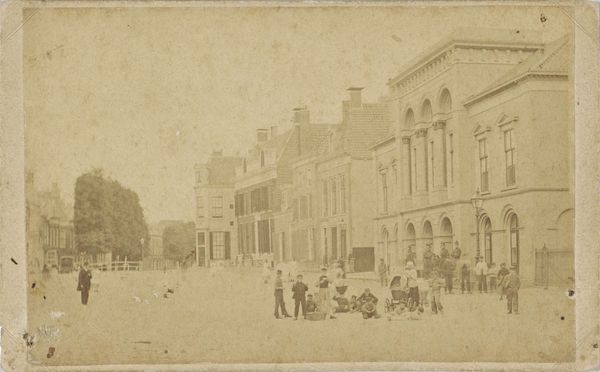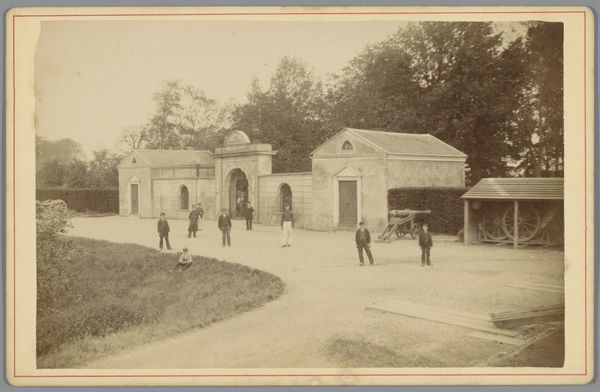
Ingang van dierentuin Artis gezien vanuit de Plantage Franselaan (thans Henri Polaklaan) c. 1860 - 1880
0:00
0:00
andriesjager
Rijksmuseum
photography, gelatin-silver-print
#
dutch-golden-age
#
landscape
#
photography
#
gelatin-silver-print
#
cityscape
#
realism
Dimensions: height 94 mm, width 135 mm
Copyright: Rijks Museum: Open Domain
Curator: A captivating cityscape from somewhere between 1860 and 1880, this gelatin silver print is titled "Entrance to Artis Zoo seen from Plantage Franselaan (now Henri Polaklaan)." It's the work of Andries Jager, and now held at the Rijksmuseum. What's your immediate impression? Editor: It’s strangely serene for an entrance to a zoo! It’s not bustling with life but has a quiet, almost sepulchral dignity. The symmetrical composition gives it an air of formality and measured calm. Curator: I'm fascinated by that contrast – the juxtaposition of a wild, animal-filled space presented through such an ordered, architectural lens. Those gatehouses on either side almost resemble classical temples guarding the transition from the civilized world to something more primal. Editor: Precisely! The leafless trees add to that feeling of antiquity, framing the central gates like some portal to the underworld. And the people are so small and still that you can easily imagine Orpheus passing into Hades to bring back Eurydice rather than going to see some bored lions. Curator: Look at the phrase “Natura Artis Magistra" below. Nature the teacher and art the master. Perhaps it indicates an early awareness of conservation, learning about the animal kingdom as a scientific exercise. And notice the title “Le Jardin Zoologique” written below, with a classical French refinement added in parallel to the Dutch and Latin! Editor: You are right about nature as the teacher, since public zoos at this point in time often acted as quasi-scientific, publicly funded endeavors in a way that allowed local populations to interact with wild animals they’d likely never come into contact with. Curator: In Dutch Golden Age painting, the arrangement and symmetry would also be used for idealized cityscapes. So here the zoo becomes almost another type of urban structure: not so far removed after all! Editor: That symmetry, the stillness – it’s less a snapshot and more a constructed allegory, frozen in time and dipped in sepia tones! It's a compelling glimpse into a specific moment, revealing an era's ideals about art, nature, and civic responsibility. Curator: Absolutely. A tableau where architecture and zoology strike a strangely elegant pose, reflecting the evolving relationship between humans, animals, and the urban spaces we co-inhabit. Editor: Exactly! We’ve gone from seeing it simply as an image to sensing it as a story—a story still relevant for the contemporary zoo's complex role within a developed metropolis!
Comments
No comments
Be the first to comment and join the conversation on the ultimate creative platform.
